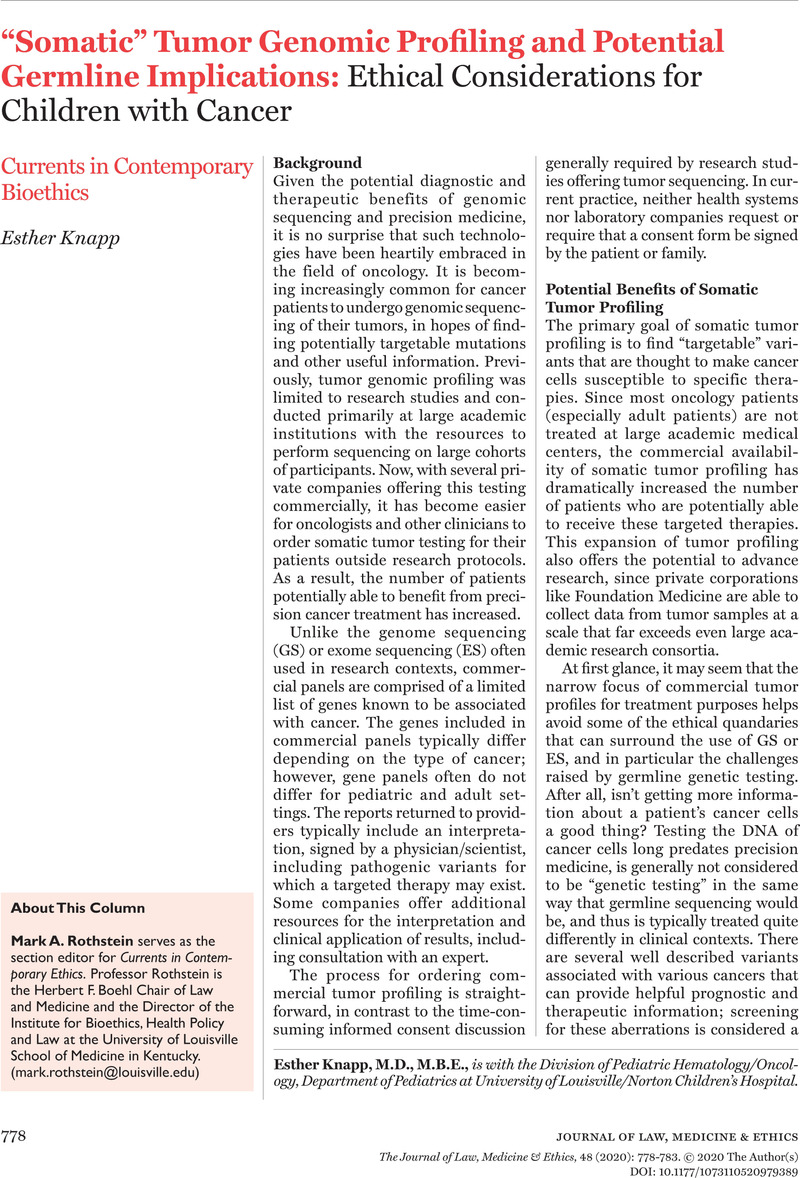DeLeonardis, K.
et al.,
“When Should Tumor Genomic Profiling
Prompt Consideration of Germline Testing?”
Journal of Oncology Practice
15, no.
9 (
2019):
465–
473;
Mandelker, D.
et al., “Mutation Detection in Patients With Advanced Cancer
by Universal Sequencing of Cancer-Related Genes in Tumor and Normal DNA vs
Guideline-Based Germline Testing,”
Journal of the American
Medical Association 318, no. 9 (2017): 825–835;
Meric-Bernstam, F.
et al., “Incidental Germline Variants in 1000 Advanced
Cancers on a Prospective Somatic Genomic Profiling Protocol,”
Annals of Oncology 27, no. 5 (2016): 795–800;
Mody, R.J.
et al., “Use of Integrative Clinical Sequencing in the
Management of Pediatric Cancer Patients,”
Journal of the American
Medical Association 314, no. 9 (2015): 1–13;
Schrader, K.A.
et al., “Germline Variants in Targeted Tumor Sequencing
Using Matched Normal DNA,”
Journal of the American Medical
Association Oncology 2, no. 1 (2016): 104–111;
Seifert, B.A.
et al., “Germline Analysis from Tumor-germline Sequencing
Dyads to Identify Clinically Actionable Secondary Findings,”
Clinical Cancer Research 22, no. 16 (2016):
4087–4094.
CrossRefGoogle Scholar 




